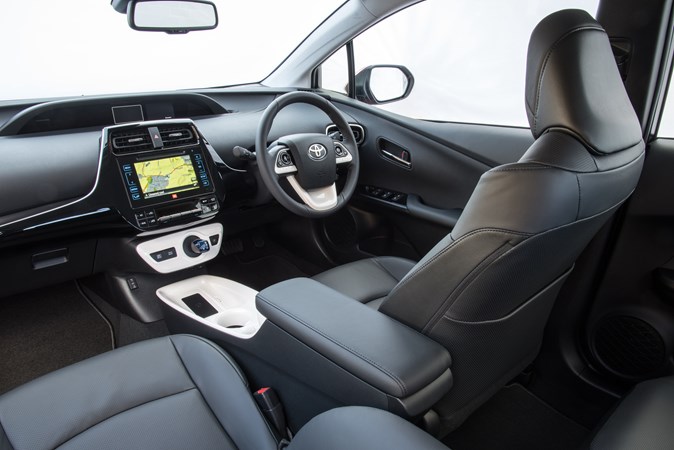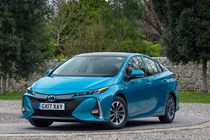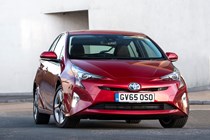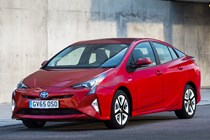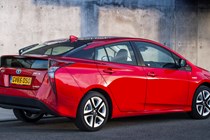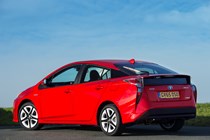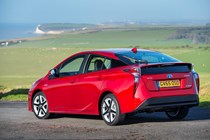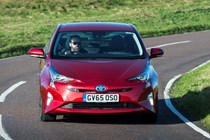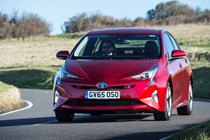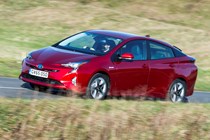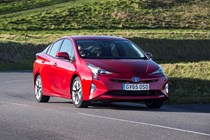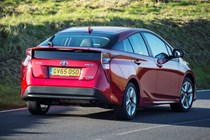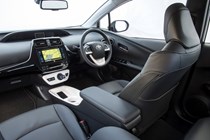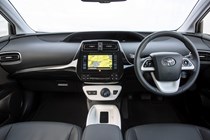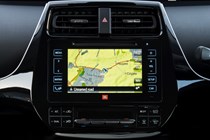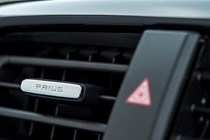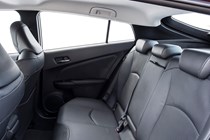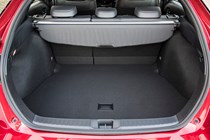
Toyota Prius Hatchback interior, tech and comfort
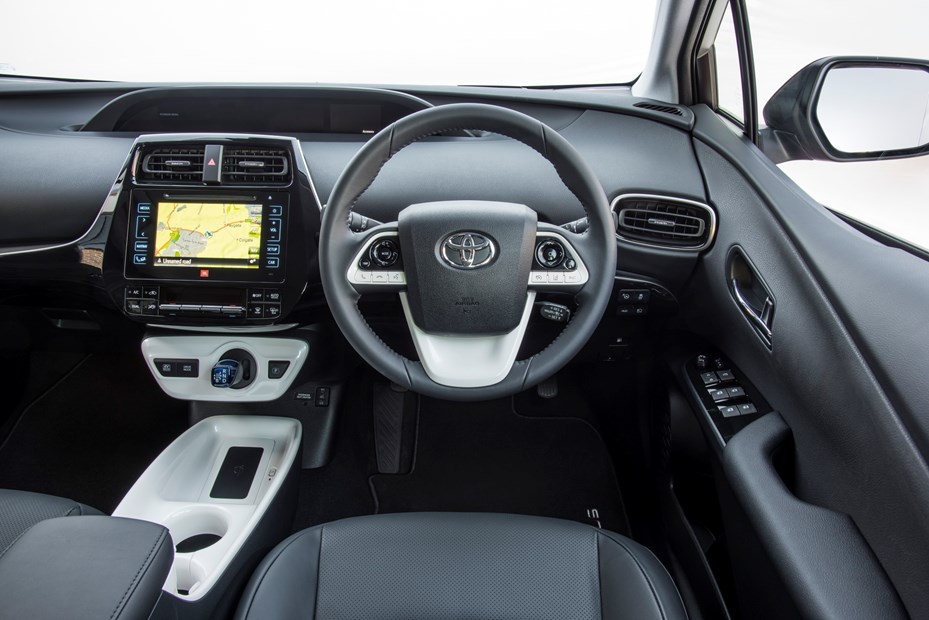
- Impressive levels of build quality
- Steering wheel could be more adjustable
- Improved visibility over predecessor
If you’ve driven a second- or third-generation Toyota Prius you’ll immediately be aware how much the newer model feels more like a conventional car. A much lower seating position combined with an enlarged windscreen framed by narrower pillars are the primary alterations there. Rearward visibility is boosted by the large exterior mirrors while the split in the rear window doesn’t impinge significantly on what you can see – it’s too slender to create a blind-spot.
Toyota reliability has long been acknowledged but choose a Business Edition or higher Prius and your fingers will caress much softer plastics than you’re used to. We’re not talking Audi levels of squidginess but it’s a welcome improvement all the same. There’s plenty of adjustment for the front seats, the reclining angle adjusted with a ratchet mechanism, while there’s an electric lumbar control for the driver. The angle of the central armrest can’t be altered but it’s at a comfortable position for most drivers.
Some may grumble about the steering wheel’s position, which has been modified so it’s on a more horizontal plane than before. The angle can still be adjusted, as can reach, but the latter movement is more restricted, meaning taller drivers might have to stretch more than is comfortable. Few will enjoy the prospect of using a foot-operated parking brake either, which is hidden under the dashboard to the left of the brake pedal, where many drivers may want to rest their left foot.
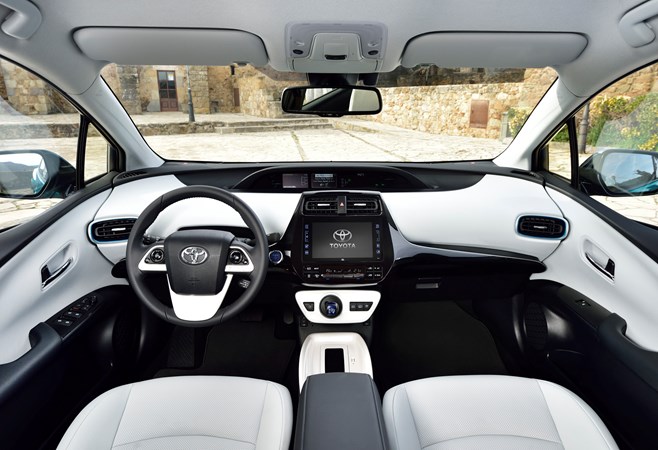
Housed at the top of the dash is a full-width instrument binnacle with various customisable graphics. Despite its initial apparent busyness, it’s relatively easy to read and combined with the sharp head-up display projected onto the windscreen, you feel in touch with all the readouts without taking your eyes too far off the road. It would make more sense for it to be located in front of the driver, however, rather than in the middle of the dashboard.
Conventional switches on the steering wheel and for the air conditioning controls are fine while the touch-sensitive areas around the infotainment system impressed by their ease of use – more accurate and requiring fewer prods than similar systems found in Citroens and Peugeots. These are still far more distracting to use on the move than ordinary buttons, however. It’s a pity that the sat-nav graphics don’t look so contemporary, looking instead like they were lifted from a 2006 car.
- Ride quality improved over its predecessor
- Hushed powertrains, particularly at low speed
- Reshaped front seats offer greater support
Arguably the biggest single contributor to the Toyota Prius’s comfort levels is the lack of noise from its petrol-electric hybrid powertrain, particularly when driven gently. The only time there’s much audible from under the bonnet is during periods of harder acceleration but this is more muted than on previous generations.
Even at motorway speeds it’s impressively quiet, largely thanks to the car’s slippery outside shape cutting wind noise. More often than not the most intrusive sound comes from the tyres.
The ride is much more comfortable too thanks to recalibrated front suspension struts and a more sophisticated double wishbone arrangement at the rear. Whether at low or high speed, it’s more accomplished at soaking up whatever rough road surfaces throw at it. This applies to the Plug-in car, too, which deals with undulations in the road without fuss and distances drivers and passengers from most bumps effectively.
The front seats weren’t particularly supportive in the past but the latest ones are significantly better, the fabric-covered ones feeling especially grippy. If any criticisms can be levelled at them it’s that the seat base is quite short and doesn’t extend as far forward under the thighs as we’d like.
Toyota’s widened the latest Prius’s bodywork liberating more space for rear seat passengers. Two adults will fare better than three on a longer journey due to the centre position still being quite narrow – and in the Plug-in there are only two seats anyway, with a large armrest between them. Overall it still lacks the spaciousness of larger hybrids such as the Ford Mondeo Saloon and Volkswagen Passat Saloon.
